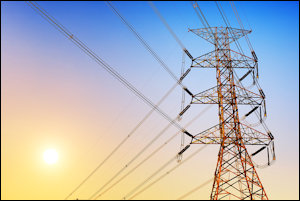Meeting the strictest compliance option of the Clean Power Plan would cost customers of Dominion Virginia Power an estimated $12.8 billion in higher electric rates over the next 30 years, the power company revealed in its 2016 Integrated Resource Plan, which it submitted to the State Corporation Commission (SCC) today.
Three lower-cost options would pack a punch as well, costing an additional $5.1 billion to $6.0 billion more than the least-cost plan, which the SCC requires Dominion to examine.
Implementing the strictest plan would increase residential electric bills (with 1,000 kilowatt hours per month usage) by 26.5% in 2022, with a declining impact through 2030.
“Our assumption is that some kind of carbon regulation is coming,” Katherine Bond, Dominion’s Dominion director of public policy said in a press briefing. However, she added that there is enormous uncertainty over what direction that regulation will take. The company examined options based on four broad approaches the Environmental Protection Agency allows states to pursue.
A legal challenge to the Clean Power Plan appears to be headed to the U.S. Supreme Court, which could derail the whole regulatory initiative. However, the McAuliffe administration, which backs the plan, has ordered the Department of Environmental Quality (DEQ) to determine which regulatory option would be best for Virginia if the Clean Power Plan clears the high court. No consensus has developed among the stakeholders who have been meeting for several months to advise the administration.
The Virginia Chapter of the Sierra Club and other environmental groups are backing a “mass-based emissions” approach, which would cap carbon-dioxide emissions on utilities’ existing and new generating facilities. A second mass-based approach would cap emissions from existing power plants only, while two other strategies would limit CO2 emissions using intensity-based goals that limit CO2 emissions per kilowatt hour of power produced. The intensity-based approach would provide more flexibility and give Virginia room to grow its economy, but it would allow greater CO2 emissions.
“We are pleased to see that Dominion is now considering one alternative plan in compliance with the Clean Power Plan, Plan E, that includes capping new and existing fossil fuel sources,” said Glen Besa, director of the Virginia Sierra Club in a statement responding to the IRP. “While Dominion claims that Plan E is the most expensive alternative, it is important to note that most of this cost is attributable to Dominion’s inclusion of a new $19 billion nuclear reactor at North Anna.” That reactor alone could raise customer rates by as much as 25%, found an analyst for the Attorney General’s office.
Also, Besa told Bacon’s Rebellion this afternoon, the IRP Dominion submitted last year recommended a plan that would increase CO2 emissions by 60%. He had not had a chance to examine the 2016 IRP, but he doubted the low-cost plan differed enough to change the percentage by much.
The low cost plan includes the following:
- Three combined cycle gas units one one location: 3,183 megawatts
- Two combined cycle gas units at a second location: 1,062 megawatts
- Combustion turbine: 2,288 megawatts
- Solar: 1,000 megawatts
- Offshore wind: 12 megawatts
By contrast Dominion’s Plan E (the lowest carbon-emitting scenario) envisions the addition of the following capacity:
- Two combined-cycle natural gas units: 3,186 megawatts
- Combustion turbine: 1,373 megawatts
- Solar: 8,000 megawatts
- Nuclear: 1,452 megawatts
- Offshore wind: 12 megawatts
Dominion cites two reasons for the high expense of the lowest carbon scenario. First, it relies heavily upon solar energy. Although the “fuel” — the sun — is free, its capacity rating, or the percentage of time a solar facility actually generates electricity is lower than for other fuel sources. Moreover, it is intermittent, which means Dominion cannot necessarily call upon it when needed, which means it must maintain backup capacity. Second, the low-carbon approach rules out coal and most new natural gas, leaving only one low-carbon alternative to provide base generation — nuclear. The lowest-carbon scenario is the only one in which Dominion envisions building the North Anna 3 unit.
Dominion did not recommend any of the alternatives it examined, but it did recommend against the mass-based programs because they offer the least flexibility in achieving compliance.
While electricity consumption has leveled off nationally, Dominion sees it continuing to grow in Virginia at an average 1.5% growth rate over the next 30 years, creating a large and growing capacity gap. Environmentalists contend that the growth rate could be reduced significantly if Dominion pursued energy efficiency strategies more aggressively. Dominion counters that Virginia’s population and economy are growing, driven by a significant degree by the growth of the energy-intensive data center industry in Northern Virginia.



